Best wheelbarrow 2022: 7 top picks to help with all your gardening jobs
Invest in the best wheelbarrow to help you make light work of transporting soil, compost, plants and more around your garden
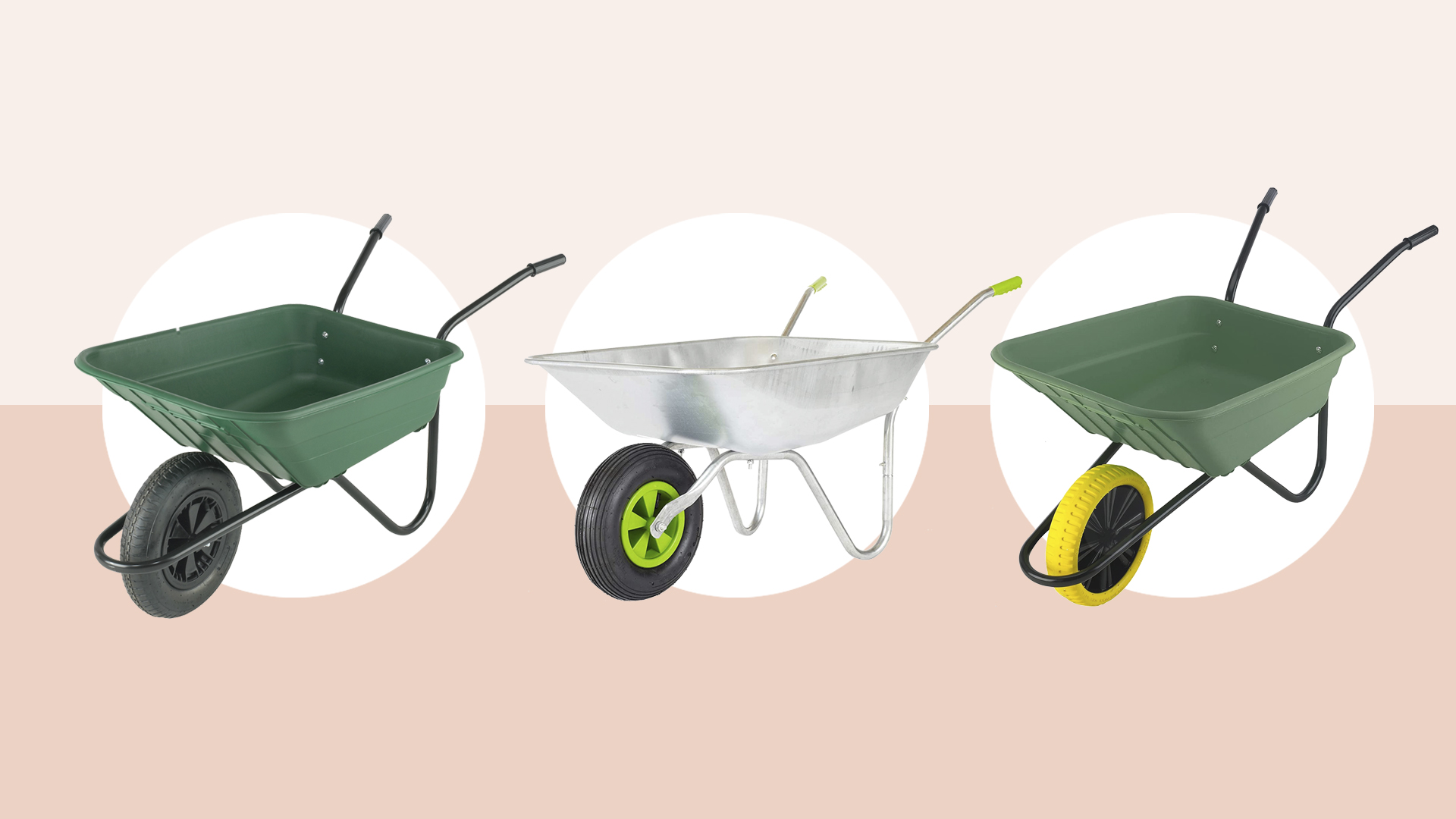

Owning the best wheelbarrow can make life so much easier when you're a keen gardener. As well as saving you multiple trips both up and down the garden when you’re tending to your plot, it gives you the freedom to move the things that you would otherwise struggle to lift on your own.
The best wheelbarrow should be a cinch for you to manoeuvre, big enough for the load you're going to carry regularly and robust enough for the whole variety of jobs you're probably going to need it for.
Sizewise, you need to pick one that you have enough space to store in your shed or garage and it also needs to be narrow enough to to fit through alleyways or gateways that lead into your garden.
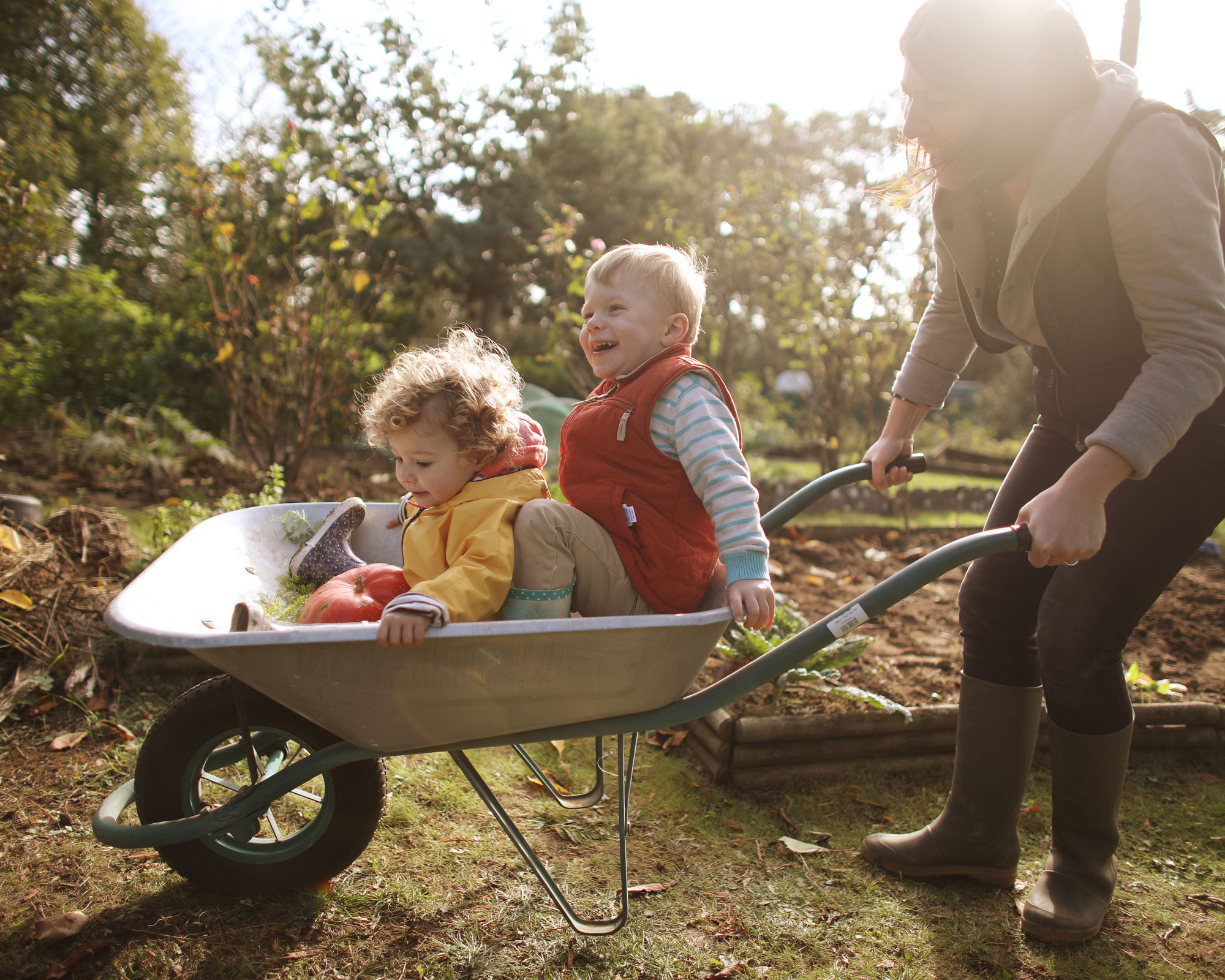
We’ve trawled through the net and gathered a selection of our favourites that will suit small gardens, larger plots and even allotments: simply scroll down to find our top picks. We've also included a handy buying guide at the bottom of the page to help you identify the best wheelbarrow model for your needs.
And when you're done, we'd recommend taking a look at our best lawn mower buying guide for even more expert advice on the best kit for your garden.
The best wheelbarrow 2022
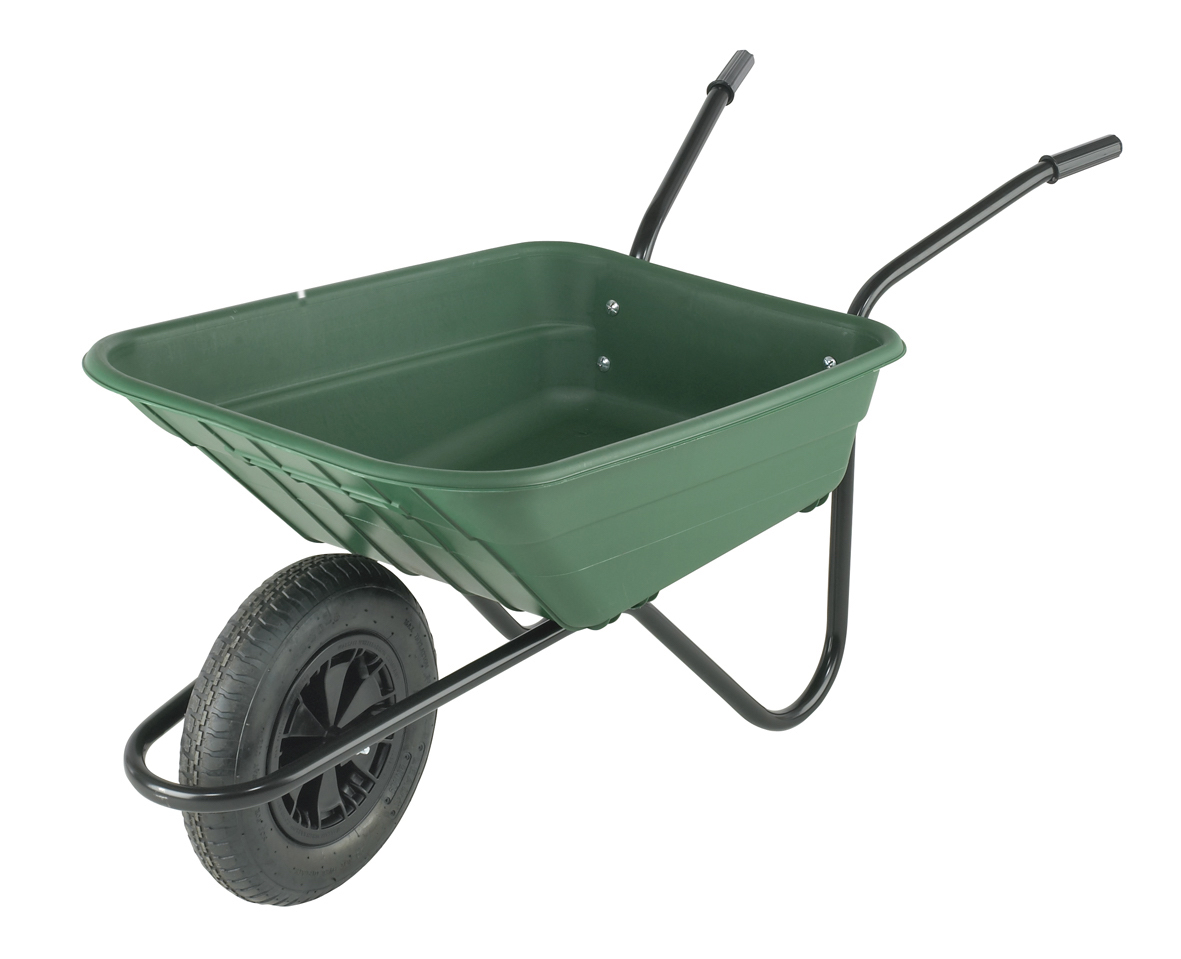
1. Walsall 90L Multipurpose Polypropylene Wheelbarrow
Specifications
Reasons to buy
Reasons to avoid
Looking for a wheelbarrow with a decent capacity, that can also handle itself well on bumpy ground? Then this model will be right up your garden path.
Robust design
With a pan made from polypropylene, this barrow is light enough to move around the garden. This is further strengthened by its steel frame.
Smooth ride
It comes in a box so you will have to pump up the pneumatic wheel, but when done, this will cushion the wheelbarrow making the ride a much smoother one whenever you have to push it over bumpy areas. Be aware that this also means the tyre can puncture, and you’ll also have to top it up with more air occasionally.
Clean exit
Featuring a tipping nose, this wheelbarrow allows you to empty its contents, from leaves or garden debris, quickly and easily.
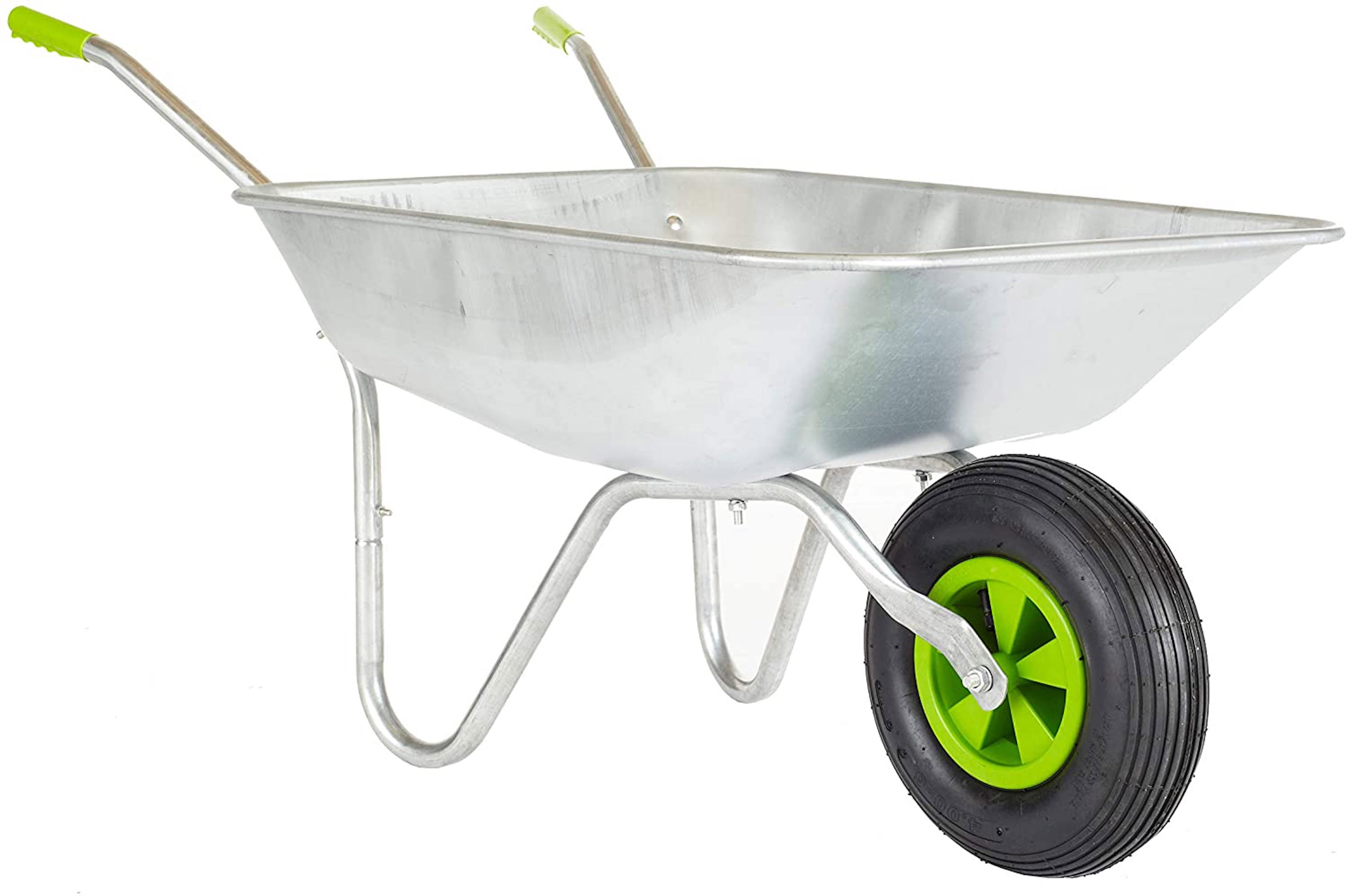
2. Neo 65L Wheelbarrow
Specifications
Reasons to buy
Reasons to avoid
If you're fine with having a heavier barrow provided you can shift heavier loads than you would in a plastic version, then this model is for you.
Sturdy steel
As this is entirely made from steel, this wheelbarrow is both strong and durable. In addition, the steel is galvanised offering extra protection against rust.
Middleweight model
While this barrow's 65 litre capacity isn’t as generous as some of our picks, if you’re buying it to move heavier items, it's unlikely you'll want any more space inside than this as it'll be too heavy to shift.
Smooth operator
This wheelbarrow features a pneumatic tyre with a 33cm diameter, making easy to manoeuvre over bumpy ground.
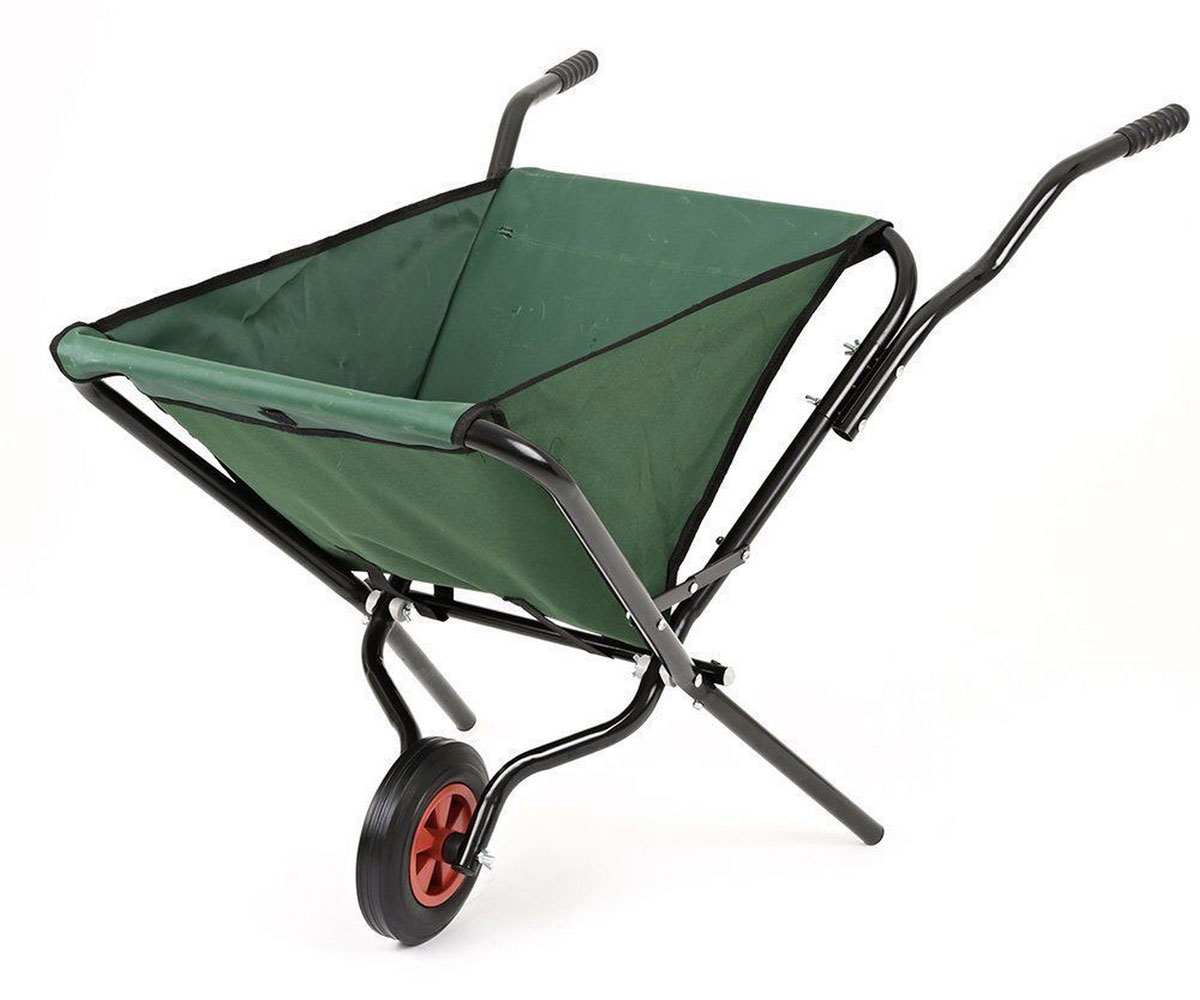
3. Lightweight Garden Polyester Folding Wheelbarrow
Specifications
Reasons to buy
Reasons to avoid
If you have a small plot and just need a barrow to help move items around rather than shift weighty loads, then this model is the ideal choice for you.
Lightweight
As the barrow is made from steel-framed fabric, it's far lighter than either an all metal or a plastic binned barrow, so easier to move around. It is best suited to piles of leaves and porting lighter tools than shifting piles of soil around.
Compact design
If you have a small tool shed or your shed or garage is already full of stuff, this foldable model won't take up a great deal of space.
Great value for money
Priced on the cheaper end of the budget, this barrow is a great choice if you'd rather not spend too much and just need it for carrying lighter items.
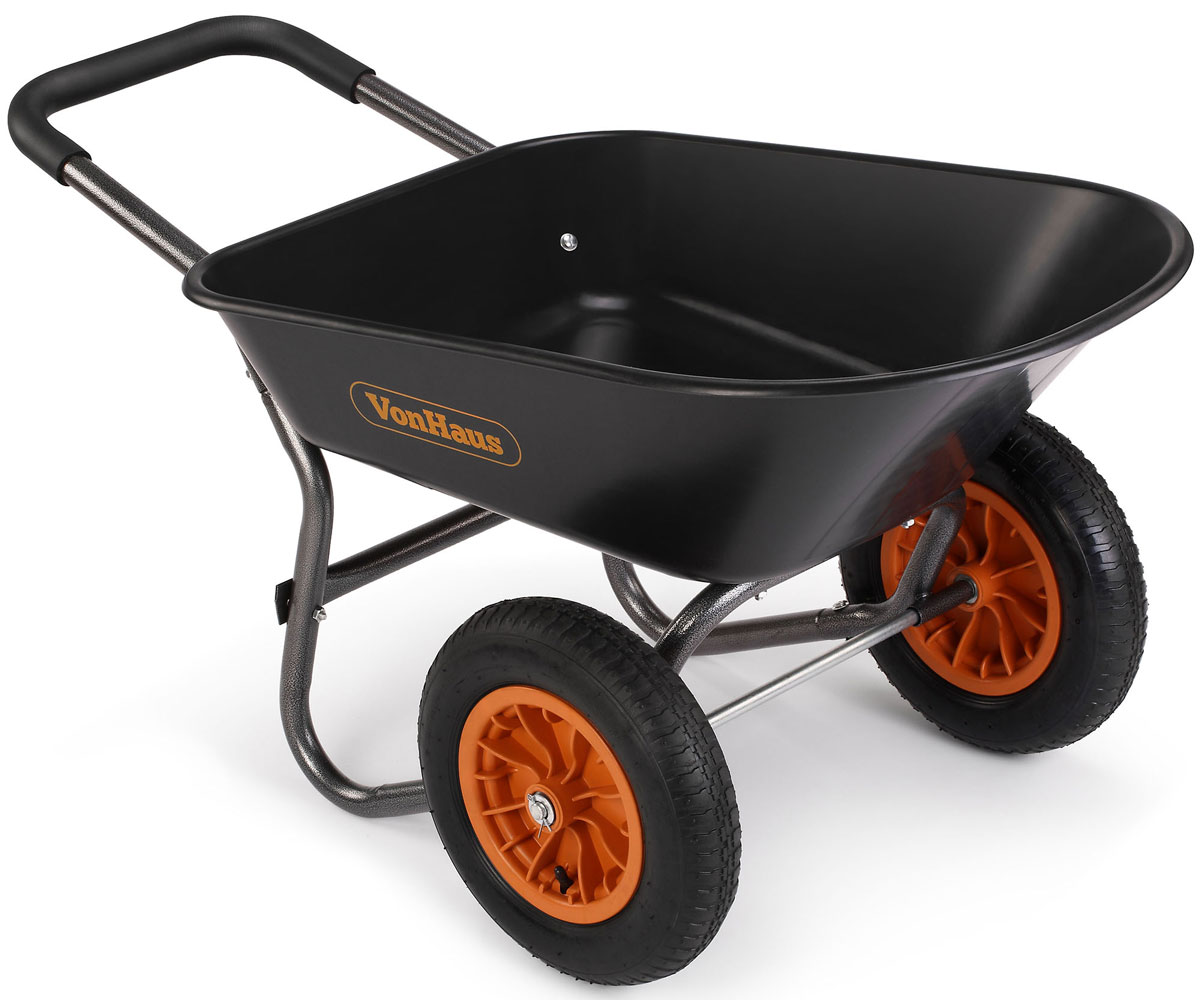
4. 78L Wheelbarrow
Specifications
Reasons to buy
Reasons to avoid
The dual wheels on this barrow instantly give you more stability, while the sturdy plastic pan will carry a larger-than-average load.
Good for awkward work
When you’re shifting heavy loads, having a wheelbarrow with two wheels like this model gives you a distinct advantage thanks to its added stability.
On manoeuvres
There is a downside to two wheels, however. These barrows can prove trickier to move on tight turns so they're best avoided in smaller spaces.
Need some air
The heavy-duty pneumatic wheels on this barrow will help with movement over bumpy ground, but they will require pumping up occasionally.
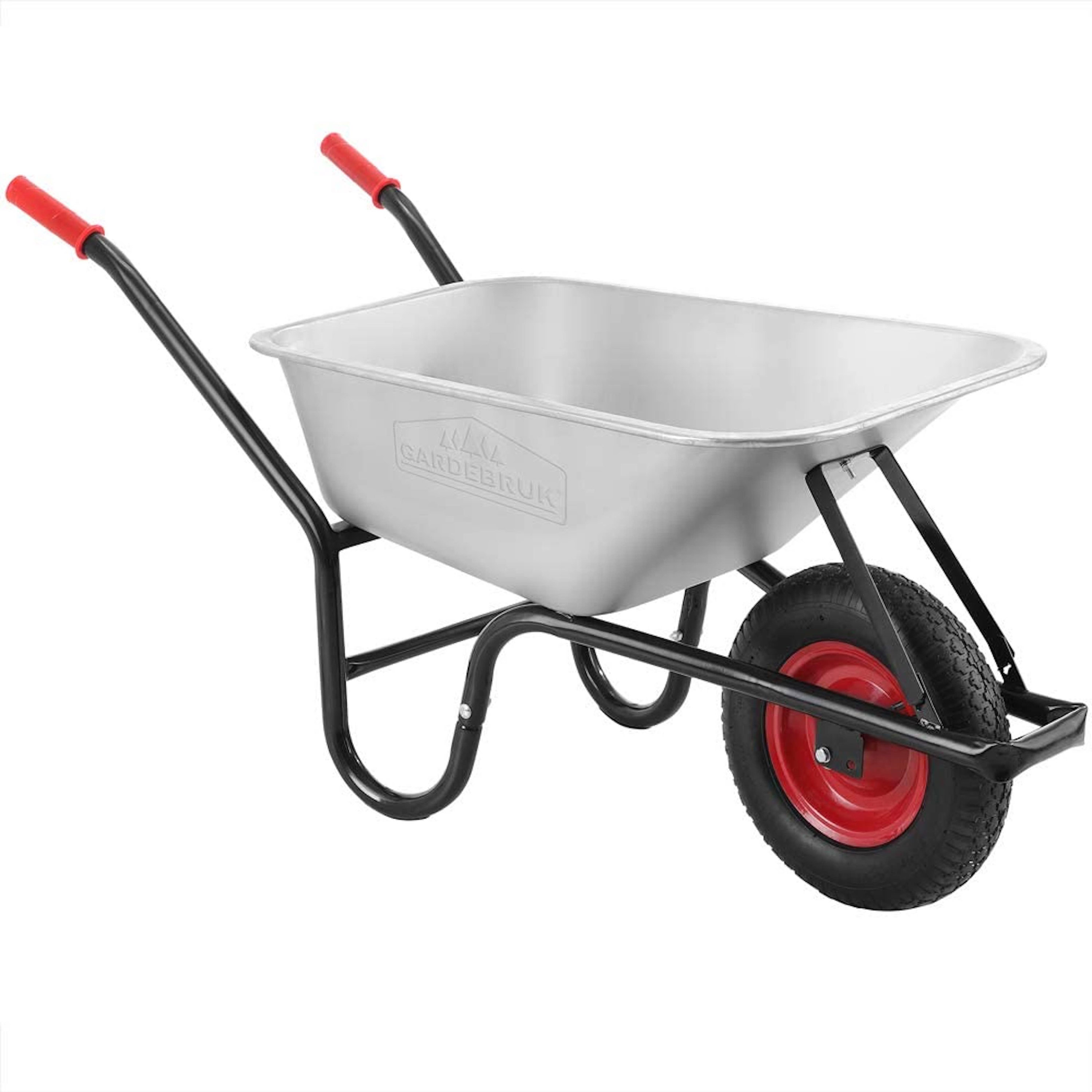
5. Gardebruk Wheelbarrow
Specifications
Reasons to buy
Reasons to avoid
While this barrow only has one wheel, it’s still designed to be study, stable, and built to last.
All-terrain
The pneumatic wheel on this barrow is 38cm in diameter - this extra width makes it far easier to glide through muddy patches in your plot.
Durable design
The all-metal design features a powder-coated steel frame and a galvanised tub, ensuring it stays rust and weatherproof, year round.
Large loads
Taking up to 250kg of weight in its 100 litre capacity pan, the deep tray will keep everything secure as you move around your garden.
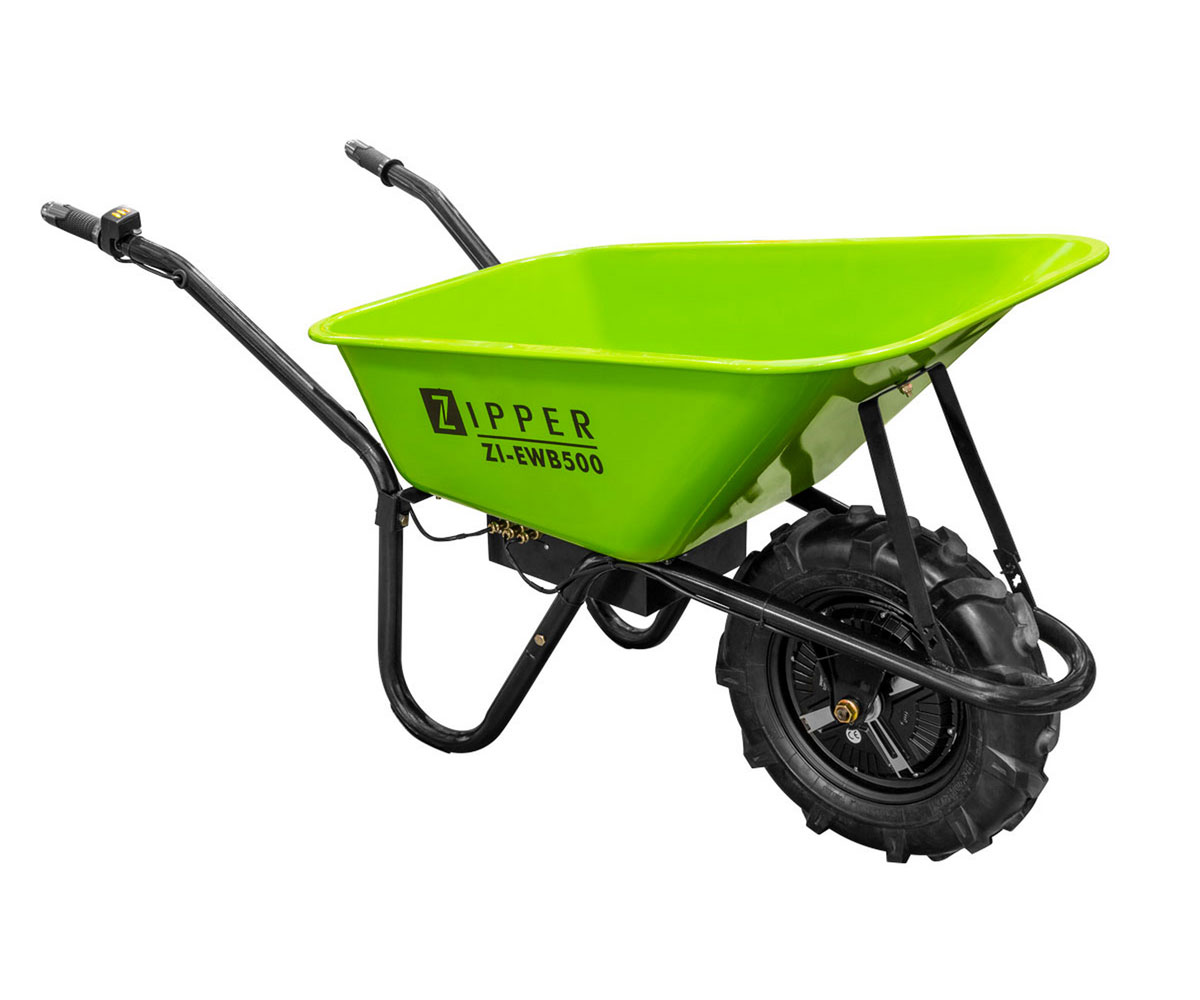
6. Zipper ZI-EWB500LI Electric Wheelbarrow
Specifications
Reasons to buy
Reasons to avoid
If you have a sloping garden or if you struggle to move a full wheelbarrow, then it might be worth trading up for a power-assisted wheelbarrow.
Wireless and rechargeable
Taking three hours to charge, a full battery will give you up to five hours of use. It will make light work of shifting anything around your garden.
Three are better than one
This barrow balances on one large motor-powered pneumatic wheel on the front and two small wheels with brakes at the rear, making it extra sturdy.
Easy to control
The controls are all situated on the right handle so it's easy to accelerate and stop whenever you need to.
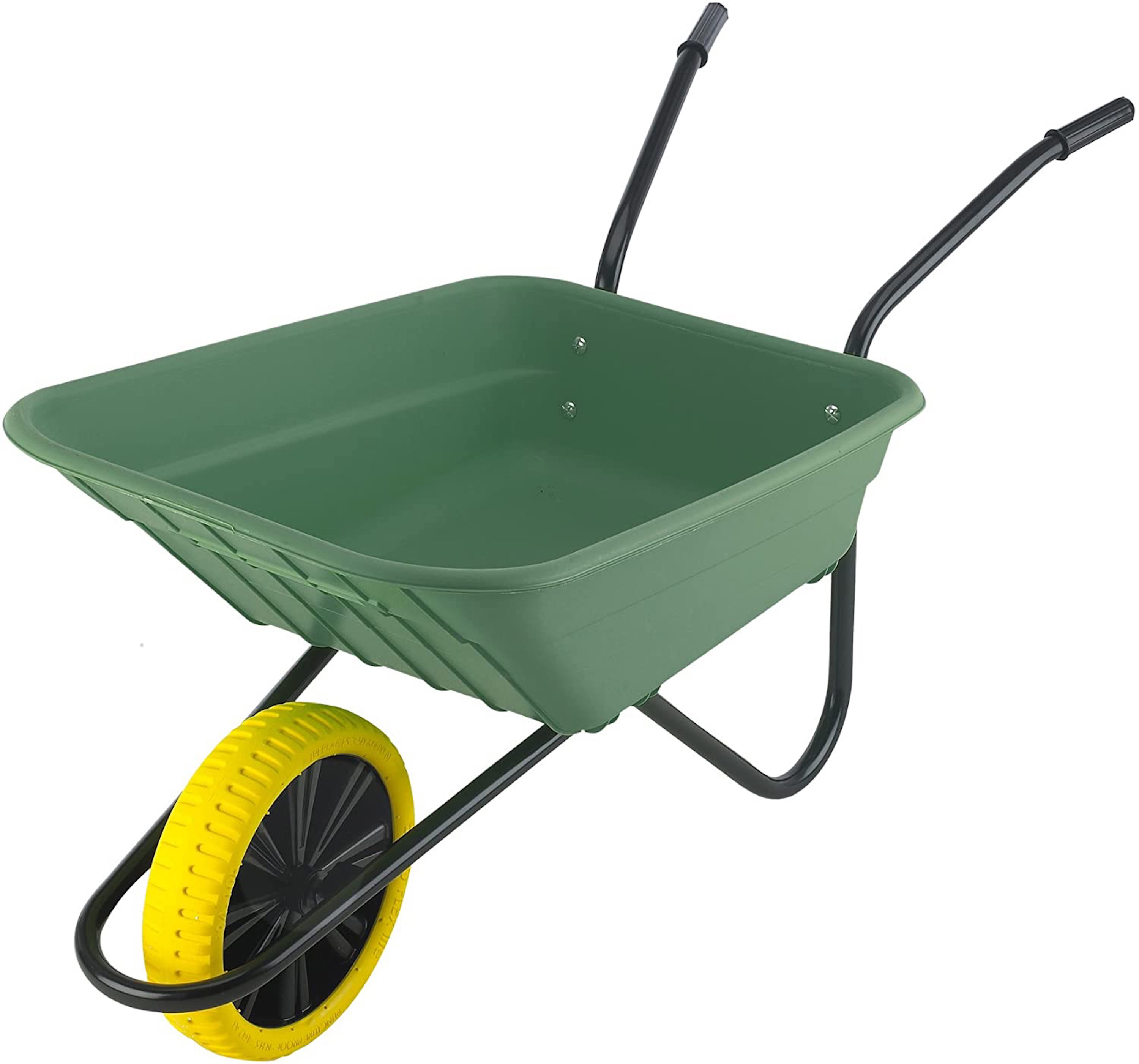
7. Walsall Wheelbarrows Shire Wheelbarrow
Specifications
Reasons to buy
Reasons to avoid
If you don't have any rough ground to negotiate in your plot, then it's definitely worth choosing a barrow with a no-puncture wheel.
Strain-free
With its tubular steel frame and polypropylene pan, this wheelbarrow will be super easy to push. The single wheel design ensures it's very manoeuvrable, too.
Maintenance free
Made from hard plastic as opposed to an air-filled pneumatic design, the puncture-proof wheel is bound to save you time and effort. And if your garden doesn’t have any tricky terrain, you won’t mind giving up the cushioning that a pneumatic wheel provides.
Handy helper
With a 90 litre capacity and bearing up to 125kg in weight, this barrow is suitable the the majority of garden tasks.
How to buy the best wheelbarrow
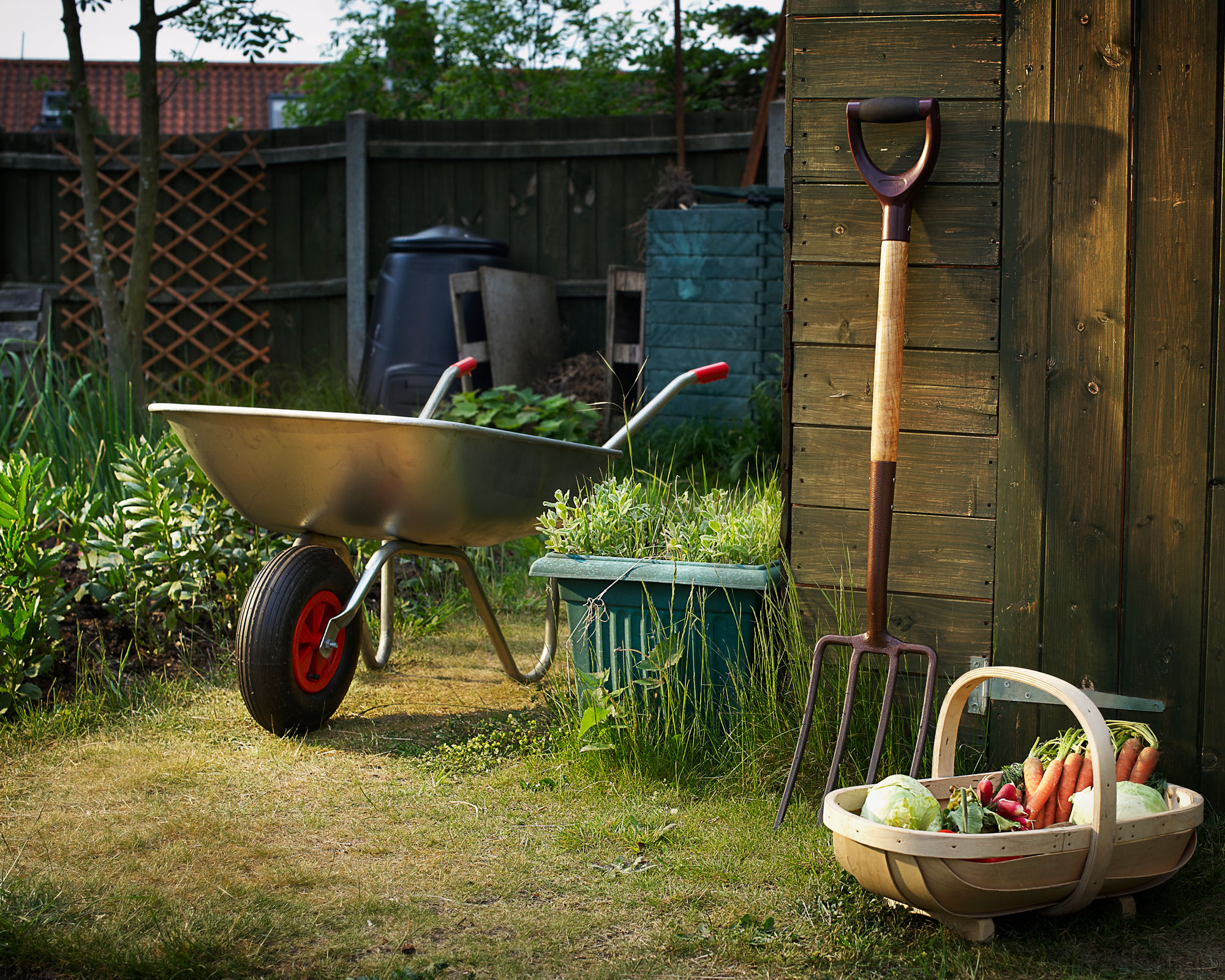
Choosing the best wheelbarrow relies on assessing the size of your plot, how much garden storage space you have and the variety of tasks you'll use it for. What the barrow is made from is also a consideration, with metal versions heavier but often more durable than plastic. There are several things that you should look out for when you’re buying.
Material
Wheelbarrows are generally made from either all-metal or a mixture of metal and plastic. There are some fabric designs available, too. Foldable designs are good if your existing shed ideas don’t include a great deal of storage space, but they can't handle the heavier loads that a plastic or metal barrow can.
The biggest advantage of choosing a design with a plastic pan is that it’s both lightweight and won’t rust, though there is always the possibility of the plastic cracking.
A plastic design may not be able to handle the heaviest of loads, so think about whether you plan to move landscaping materials and always check a model's weight capacity.
Metal barrows are heavier than plastic, although they needn’t be unduly so. They’re strong, sturdy and can take heavier loads. They’re robust, too, as stainless steel is highly resistant to rust, with galvanised designs resisting this process.
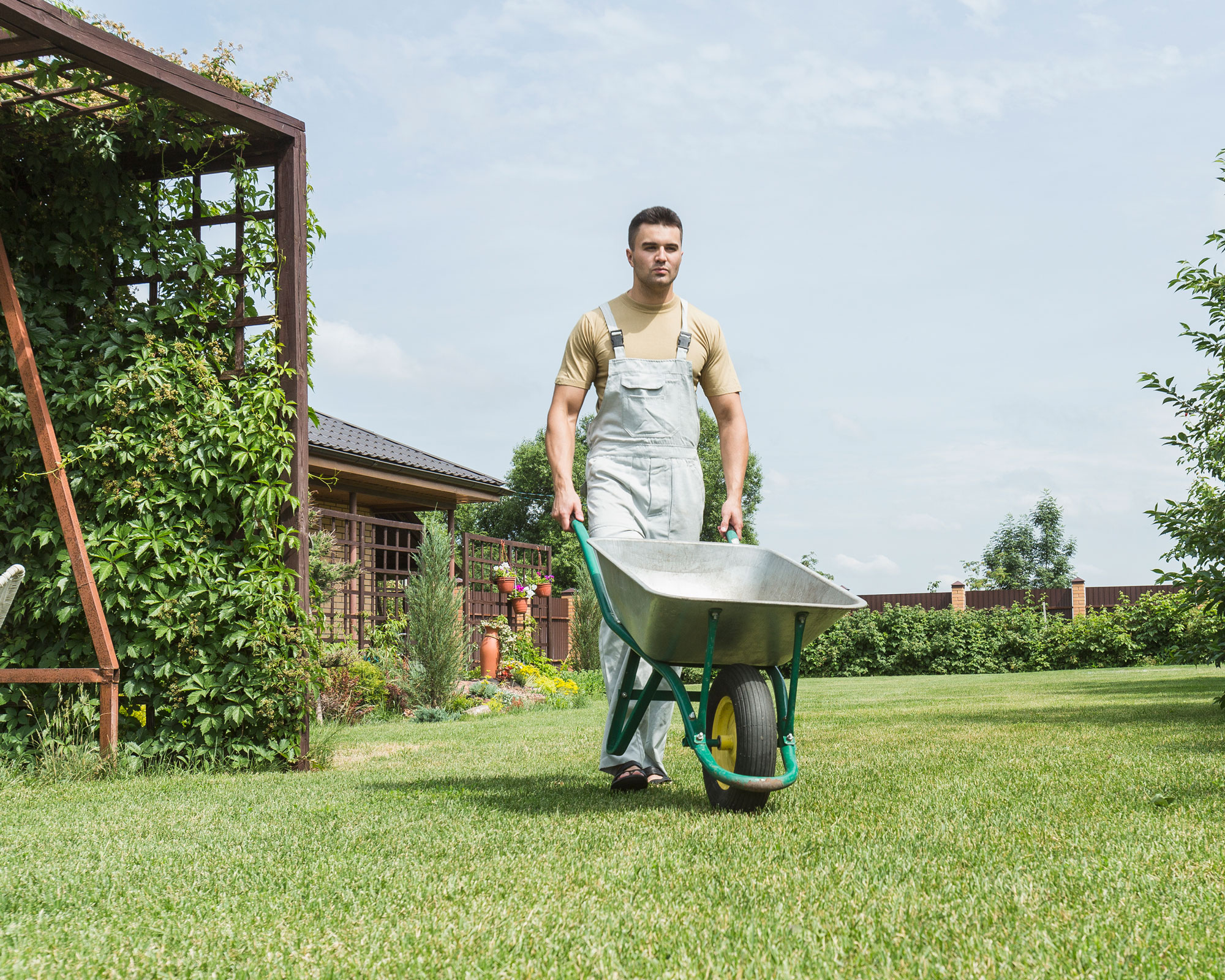
Wheels
The majority of wheelbarrows have one wheel. This makes them easy to move and manoeuvre around in a space. Be aware though, that with heavy loads on board, barrows have the tendency to list to one side and you'll need to hold it steady to counterbalance and keep it level.
Prefer more stability? A two-wheeled barrow will help keep you on track when you have weighty loads on board. The downside though, is that they're is harder to turn in tight spots than a single-wheeled model, so potentially aren't the best option for small gardens.
Tyres
Wheelbarrows with pneumatic tyres are much-easier to push over bumpy or rough ground, but they can (and do) puncture, so do bear this in mind if you're likely to be pushing it along rocky garden paths, for example. You can choose a puncture-proof, solid tyre to avoid this hassle, but be aware that it'll make for a much rockier ride.
Capacity
Wheelbarrow capacity varies, with models holding from just 50 litres, to others carrying up to 130 litres. Bear in mind that a larger capacity barrow will be bigger in size and therefore bulkier to store.
Weight capacities range from around 60kg, to more than 180kg, so think about what you’re likely to be carrying around in the wheelbarrow. As a rule, the more a barrow carries, the more expensive it is, so try to avoid spending money on more weight capacity than you actually need. A wheelbarrow full of leaves, for instance, isn't a heavy load.
What is the best wheelbarrow?
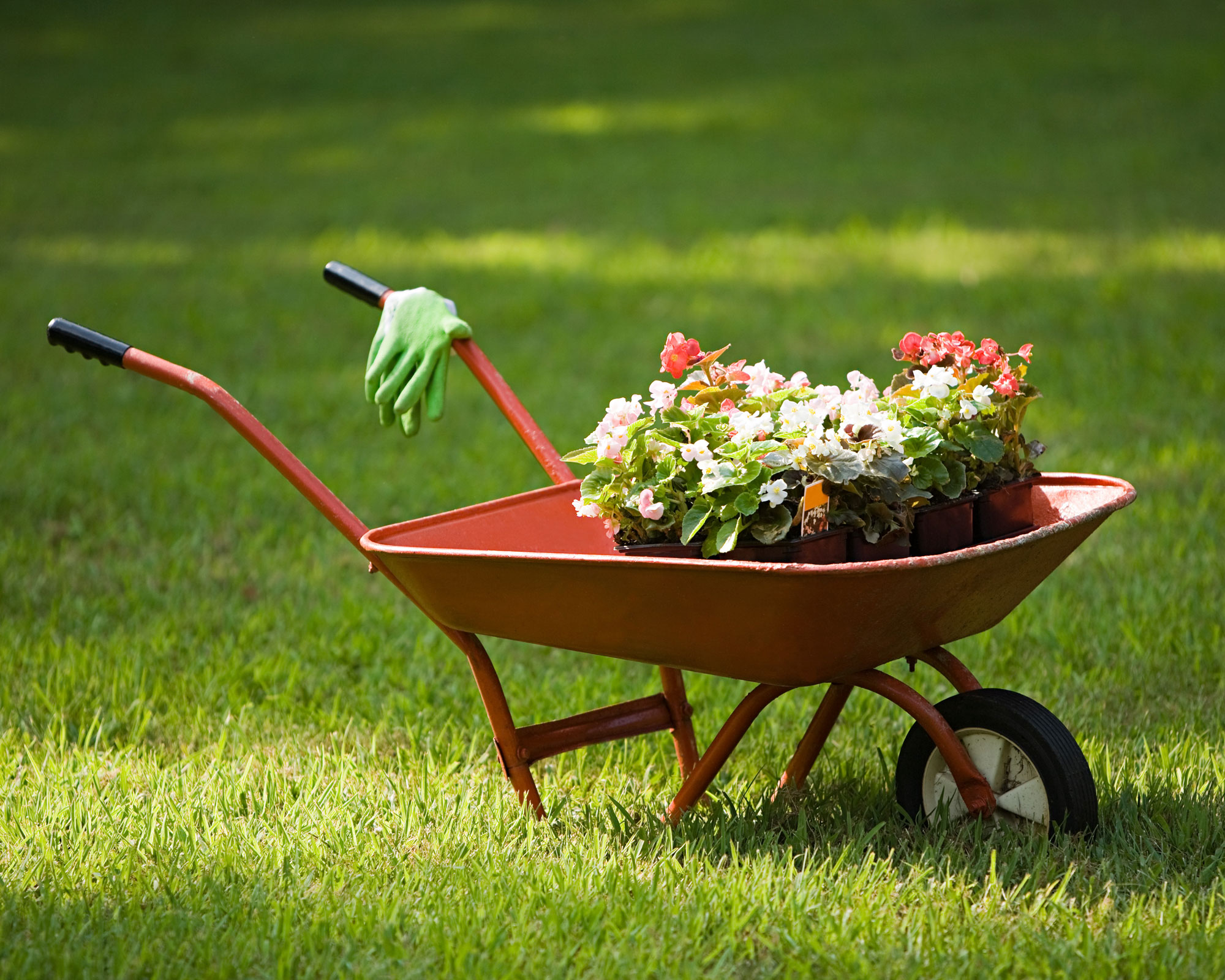
If you're looking for a wheelbarrow for all your gardening tasks that’s both light and manoeuvrable, we’d recommend the Walsall 90L Multipurpose Polypropylene Wheelbarrow. It has a decent capacity, a pneumatic wheel to cope with rough areas, and it’s a great value option.

Sarah is a freelance journalist and editor writing for websites, national newspapers, and magazines. She’s spent most of her journalistic career specialising in homes and gardens and loves investigating the benefits, costs and practicalities of home improvement. It's no big surprise that she likes to put what she writes about into practice, and is a serial house revamper.
